Table of contents
- BMW patent shows motorcycle hybrid frame Supersport frame with screwed carbon parts
- BMW combines aluminum and carbon
- Carbon or plastic bottle
- What parts are they?
- Conclusion
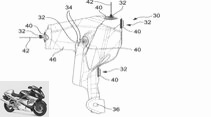
BMW.
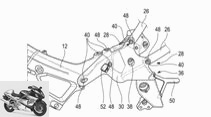



4th pictures
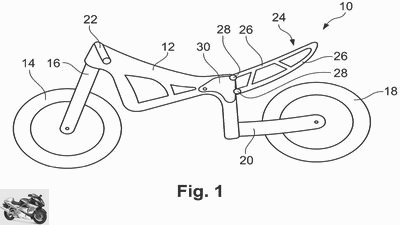
BMW motorcycle
1/4
BMW Motorrad would like to add stiffening elements made of composite materials to a standard aluminum frame. The patent speaks of the attachment of the rear frame
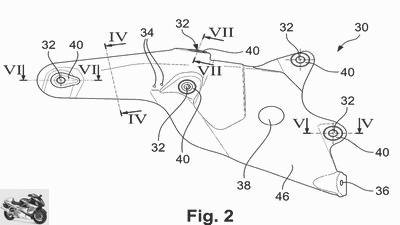
BMW motorcycle
2/4
According to BMW, the elements can be made from all types of fiber materials, including carbon and polyamide and polyethylene.
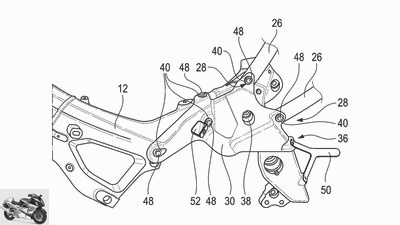
BMW motorcycle
3/4
In this context, it is important that the elements are screwed to the aluminum frame.

BMW motorcycle
4/4
In this way, BMW could produce new model series quickly and cheaply with just a single aluminum base frame and model-specific elements.
counselor
technology & future
BMW Motorrad: New aluminum frame with carbon reinforcements
BMW patent shows motorcycle hybrid frame
Supersport frame with screwed carbon parts
Carbon motorcycle frames are light, stiff, and expensive. Aluminum frames are cheaper, but sometimes unintentionally more flexible. BMW would now like to combine these two worlds in a practical way.
Jens Kratschmar
05/18/2021
In this article:
- BMW combines aluminum and carbon
- Carbon or plastic bottle
- What parts are they?
- Conclusion
The idea is as simple as it is logical: use a light, stable material such as carbon to build motorcycle frames. The disadvantage of carbon is, in addition to the enormous costs and effort in production, that the frame sometimes becomes too stiff. The motorcycle becomes unwieldy. One solution: add more flexible aluminum to certain areas of the carbon frame. In the end, that changes little on the cost side. BMW has patented an invention that allows a frame made of aluminum to be stiffened with screwed-on composite elements.
BMW combines aluminum and carbon
BMW cites the point of the high cost of frames made of composite materials such as carbon as the reason behind the invention. The plan, it seems, is to be able to convert a standard aluminum frame for different areas of use using the screw-on elements made of light and stiff materials, or, to speak in racing: to be able to quickly adapt the rigidity of the frame to the conditions of the track . Conversely, this technology allows a single frame construction to be quickly adapted to different models in series. Example: There is only one base frame in the BMW S series; the model-specific changes to a S 1000 R and S 1000 XR the rear, footrest supports or even the geometric parameters such as swing arm bearings and steering head could be adapted with the quickly exchangeable composite parts.
Carbon or plastic bottle
When we read racing and lightly, most of us probably think of carbon. But for BMW, the carbon fiber laminate is just one of many ways to manufacture the new composite parts. Even aramid, polyamide, polyethylene, ceramic, basalt, PMMA (light guide) or steel fibers are expressly mentioned and also their combination with and with one another in different fiber angles and laminate thicknesses. Means: In the future, parts of BMW frames could even be made from old plastic bottles. BMW is silent about the production method, the idea is model-specific Components so quickly with 3D printing to manufacture is obvious and would only be logical.
What parts are they?
So far, BMW has made the patent for the attachment of the main frame and rear frame and images accordingly. In terms of driving dynamics, however, using a stiffer element makes little sense at this point, since the screwed-on rear frame should still be made of aluminum. Areas that are really important for the stiffening of a frame are swing arm bearings, steering head, cylinder head bracket and, in the case of the bridge frame, the area of the tank connection towards the rear. BMW remains as vague as possible, which is only comprehensible with a patent. The subsequent possibility to build or print the complete rear end from composite is then again very interesting.
Conclusion
Despite the supposed smoke candle of the rear frame attachment, the BMW invention is extremely interesting and absolutely worth pursuing. The advantages of frame production with only one base frame, supplemented with model or application-specific elements made of possibly printed composite material, would keep series production highly efficient.
Projected onto racing, there are also fantastic opportunities to adapt the bike to the respective routes and to fine-tune the last few percent of performance.
Related articles
-
Jonich spoked wheel with carbon: inside aluminum, outside carbon
Jonich 6th pictures Jonich 1/6 Aluminum meets carbon in a noble combination. Jonich builds spoke rims out of aluminum and combines them with a fine…
-
Technology: new motorcycle frame concept
Melly Technologies counselor technology & future Technology: new motorcycle frame concept Technology: new motorcycle frame concept Blockbusters With the…
-
Kawasaki 15th pictures archive 1/15 The frame is crucial for the driving behavior. archive 2/15 When designing the main frame, the following parameters,…
-
Tuning special – interesting facts about carbon
jkuenstle.de 18th pictures jkuenstle.de 1/18 Tuning special – interesting facts about carbon. Magoga 2/18 For mufflers, the manufacturers either work…
-
Kappa K-Force aluminum case with more volume for 2021
Kappa accesories Luggage Kappa K-Force aluminum case with more volume for 2021 Kappa K-Force update More space for the world tour Load volume and…
-
Ilmberger Carbon: body kit for the BMW S 1000 XR
Ilmberger Carbon 10 pictures Ilmberger Carbon 1/10 Ilmberger Carbon from Bavaria has put together a complete body kit made of carbon for the BMW S 1000…
-
archive counselor technology & future Technology frame types Technology explained Everything about frame types Full braking, marginal lean or full shower…
-
Ariel Ace R in the driving report
Kel Edge 12th pictures Kel Edge 1/12 With this Ariel, of course, it is not the washing power that is convincing, but the overall concept Kel Edge 2/12…
-
BMW Motorrad Concept 9cento 2018
BMW 37 pictures BMW 1/37 At the Concorso d’Eleganza Villa d’Este 2018, BMW is giving an outlook on what a new, exciting adventure sport model could look…
-
BMW safety scooter with crash-proof frame
BMW 14th pictures BMW 1/14 These graphics, which were newly published by BMW in February 2021, present a crash-proof framework. The difference to the C1:…